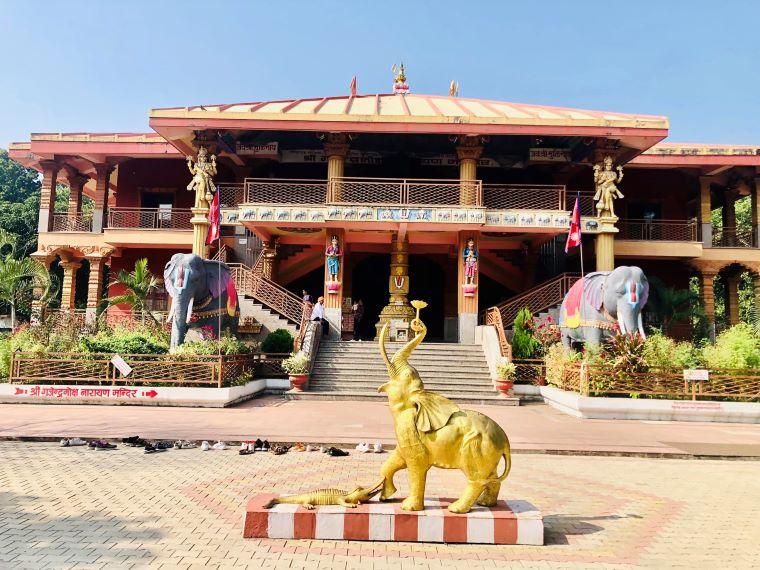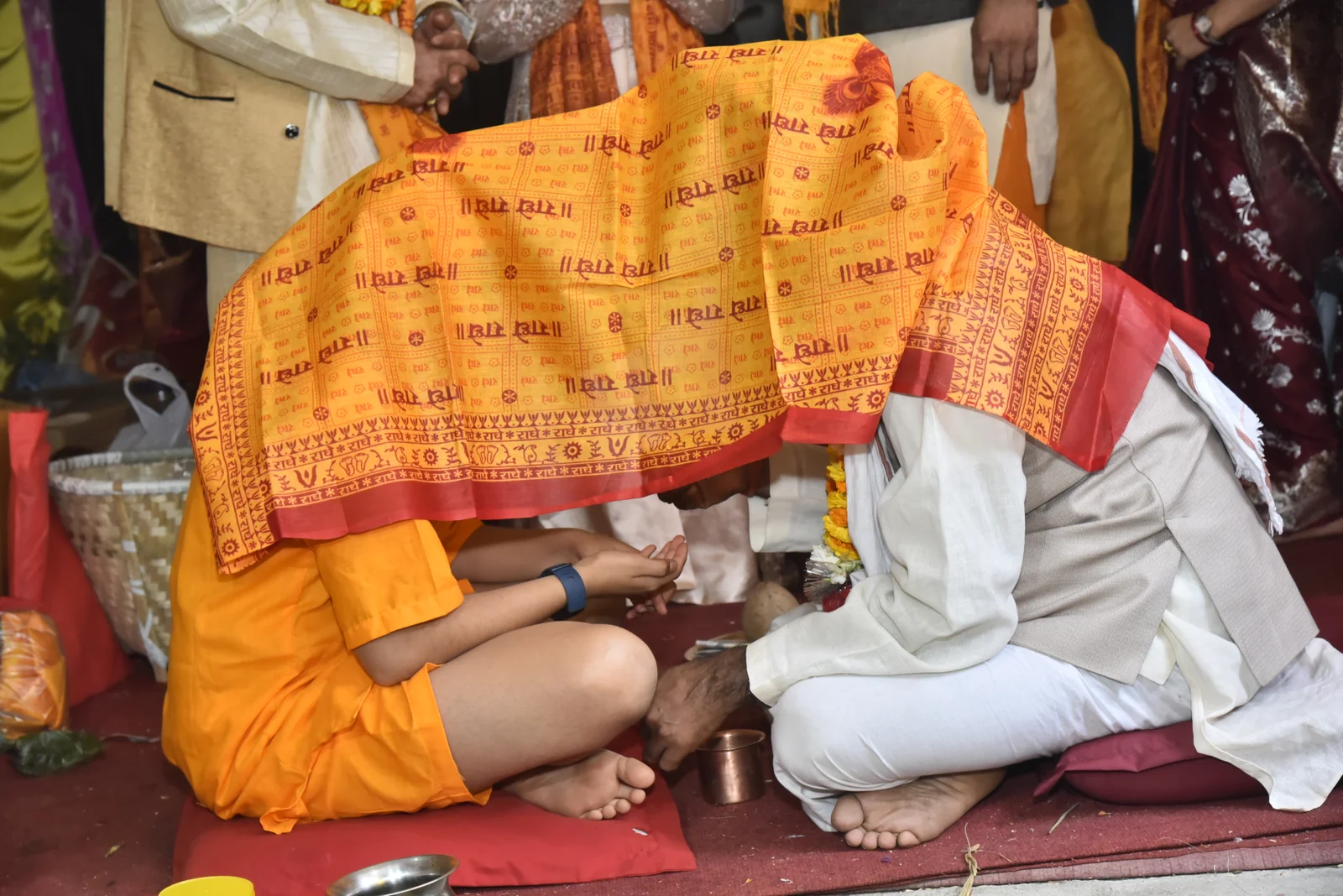Share this Article

Introduction
Triveni Dham, located in the Nawalpur District of Nepal, is a revered spiritual destination that embodies a rich tapestry of history, culture, and religious significance. Nestled at the confluence of three sacred rivers—the Swarnabhadra, Purnabhadra, and Narayani—this site has long been a focal point for pilgrims seeking spiritual renewal and connection to their heritage. As a place where myth and devotion intertwine, Triveni Dham attracts thousands of devotees, particularly during significant religious events such as ‘Maghe Aunsi’.
The significance of Triveni Dham extends beyond its picturesque location; it is steeped in ancient legends and historical narratives that resonate deeply within the Hindu faith. Believed to be a site where divine interventions occurred, it offers visitors not only a chance for spiritual cleansing through ritual bathing but also a rich cultural experience steeped in the lore of saints and deities. The area's historical context is further enriched by its association with revered figures such as Sage Valmiki and Lord Narayan, making it a pilgrimage site of profound importance.
In recent years, Triveni Dham has gained prominence as a significant religious and historical destination, drawing not only local devotees but also a substantial number of tourists from India and beyond. This influx has prompted local authorities to enhance infrastructure and security measures, ensuring that the sacred experience remains accessible and safe for all visitors. As modern developments intertwine with age-old traditions, Triveni Dham stands as a testament to the enduring nature of faith and the importance of preserving cultural heritage in an ever-evolving world.
The convergence of spirituality, history, and community at Triveni Dham creates a unique atmosphere that invites reflection and reverence. It is more than just a pilgrimage site; it is a living embodiment of the beliefs and practices that have shaped the lives of countless individuals over centuries. As we delve deeper into the significance and attractions of Triveni Dham, we uncover not only its role as a spiritual haven but also its place in the broader narrative of Nepal's rich cultural landscape.
The Context of Development in Nepal
Nepal has been reliant on foreign aid for nearly six decades, with various EDPs involved in policy formulation and program execution. However, despite substantial investments, the country has not achieved significant economic progress. Many Nepalese artisans, particularly weavers, have found themselves at the periphery of economic development, facing the dual pressures of traditional practices and contemporary market demands.
The traditional weaving sector, particularly the production of Dhaka fabric, is deeply embedded in the cultural fabric of Nepal. However, it has been increasingly marginalized in the face of globalization and neoliberal market forces. The artisans, primarily from rural areas, have shown resistance to adopting new designs, which has resulted in a stagnation of their craft.
Methodology
This ethnographic study employed qualitative methods, including formal and informal interviews, observations, and focus group discussions, to gather insights from artisans in Terathum. The research focused on the experiences of traditional weavers and their responses to changing market conditions, particularly the influence of start-up entrepreneurship on demand-based markets.
The Role of NGOs and Development Initiatives
The role of NGOs in enhancing the livelihoods of artisans cannot be overstated. Initiatives aimed at promoting traditional crafts have provided artisans with opportunities to access new markets, such as high-profile wedding markets and collaborations with retail chains. For instance, the Poverty Alleviation Fund (PAF) has facilitated the establishment of community facility centers (CFCs) that serve as hubs for artisans to enhance their skills and connect with markets.
Despite these initiatives, many artisans remain skeptical about the sustainability of new designs and market strategies. The resistance to change is rooted in a deep-seated cultural attachment to traditional practices, which are often seen as integral to their identity.
The Dhaka Weaving Tradition
The Dhaka fabric holds cultural significance in Nepal, characterized by its intricate patterns and vibrant colors. Traditionally woven by the Limbu community, the fabric is not just a product but a symbol of cultural heritage. The mythological origins of weaving in Limbu culture highlight the community's connection to their craft.
However, the transition from cultural practice to commercial production has been fraught with challenges. The introduction of market dynamics has shifted the focus from barter systems to cash transactions, creating a disconnect between artisans and their traditional practices. The government and NGOs have attempted to support this transition, but the results have been mixed.
Resistance to Change
One of the most striking findings of this study is the strong resistance among traditional weavers to adopt new designs and techniques. Many artisans express a preference for traditional patterns, viewing them as a representation of their cultural identity. This resistance is compounded by the perception that new designs lack market viability.
Artisans like Ana Limbu, who have ventured into entrepreneurship, report challenges in implementing new designs due to insufficient market demand. Despite receiving training and financial support, many artisans find it difficult to balance innovation with tradition.
Economic Empowerment and Artisan Voices
Economic empowerment initiatives have aimed to enhance the livelihoods of marginalized groups, including women and individuals with disabilities. The establishment of producer groups and CFCs has provided artisans with a platform to collaborate and share resources. However, the benefits of these initiatives are often unevenly distributed.
Artisan voices reveal a complex interplay of aspirations and realities. While some artisans have successfully navigated the market, others feel trapped in a cycle of poverty, unable to break free from traditional roles. The stories of artisans like Dil Kumari Limbu highlight the struggles faced by many in the sector, as they navigate the challenges of modern entrepreneurship while trying to preserve their cultural heritage.
Conclusion
Triveni Dham stands as a beacon of spirituality and cultural heritage at the confluence of three sacred rivers. Its historical significance, coupled with modern developments, makes it a must-visit destination for those seeking spiritual solace and connection to ancient traditions. As thousands of devotees continue to flock to this holy site, Triveni Dham remains a testament to the enduring power of faith and community in Nepal.
Categories:
Travel & Tourism
Tags:
SustainingTradition
,
Triveni Dham







